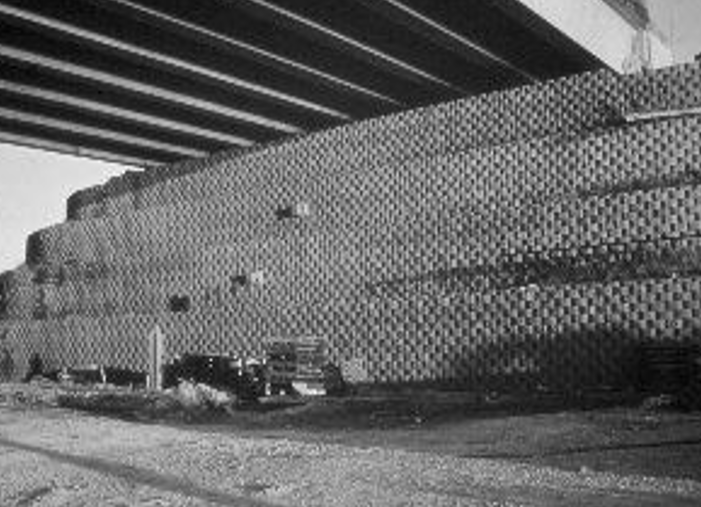R.J. Bathurst[1][2], D.L. Walters[3] and D.D. Saunders[4]
- ,2,3 Geotechnical Research Group, Department of Civil Engineering, Royal Military College of Canada, P.O. Box 17000, STN FORCES, Kingston, ON, K7K 7B4
- Bathurst-r@rmc.ca
- Walters-d@rmc.ca
- Saunders-dd@rmc.ca
ABSTRACT
This paper describes recent developments in North America related to the innovative design and construction of vertical or near-vertical geosynthetic reinforced soil retaining walls that incorporate modular masonry blocks as the wall facing system. The facing is integrated with horizontal layers of high-performance polymeric inclusions (geosynthetics) in order to reinforce the retained backfill material. The characteristic feature of these systems is the use of dry-stacked modular blocks that are typically manufactured using specially molded, dry-cast masonry concrete. Since their introduction in the mid-1980’s, these structures have gained wide popularity in North America and internationally largely due to their good performance, relatively low cost, ease of construction, and a wide variety of available aesthetically pleasing finishes. However, the discrete nature of modular block facing systems requires specialized testing and design considerations not found in other retaining wall technologies. The paper gives a brief review of the analysis and design procedures for these systems in a static loading environment. Also presented are the specifications for the dimensional tolerances, compressive strength, water absorption and freeze thaw durability. Potential sources of construction-induced cracking are identified and preventative measures are recommended. Finally, concern regarding the performance of the masonry block units in aggressive alkaline environments is discussed and some of the standardized protective measures are presented.
Key words: Masonry blocks, modular, dry-stacked, geosynthetics, durability
RETWALL01



